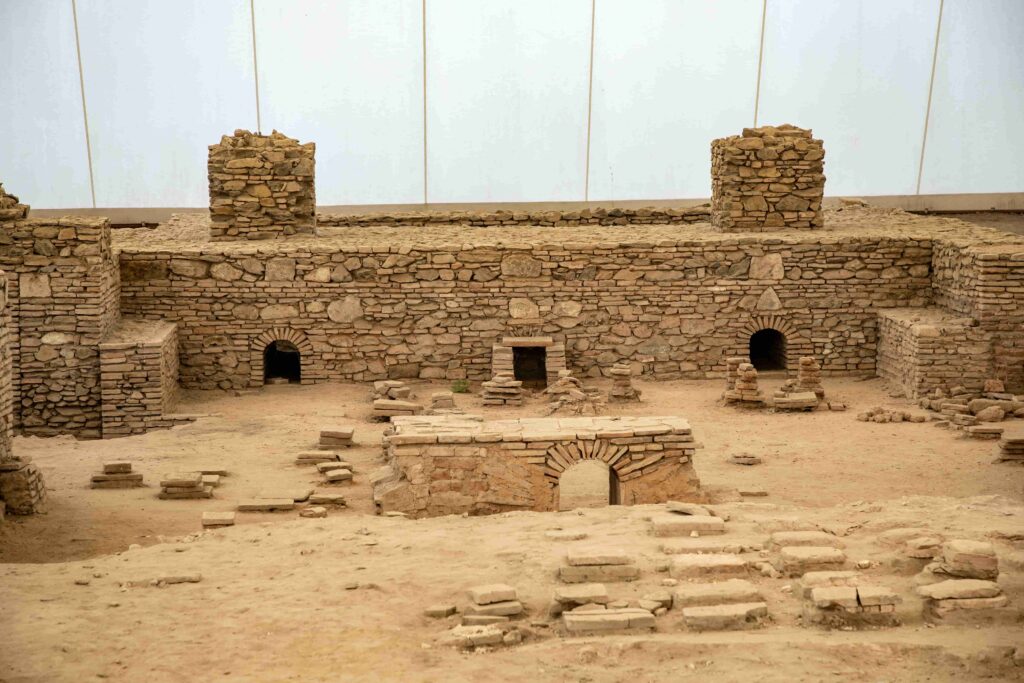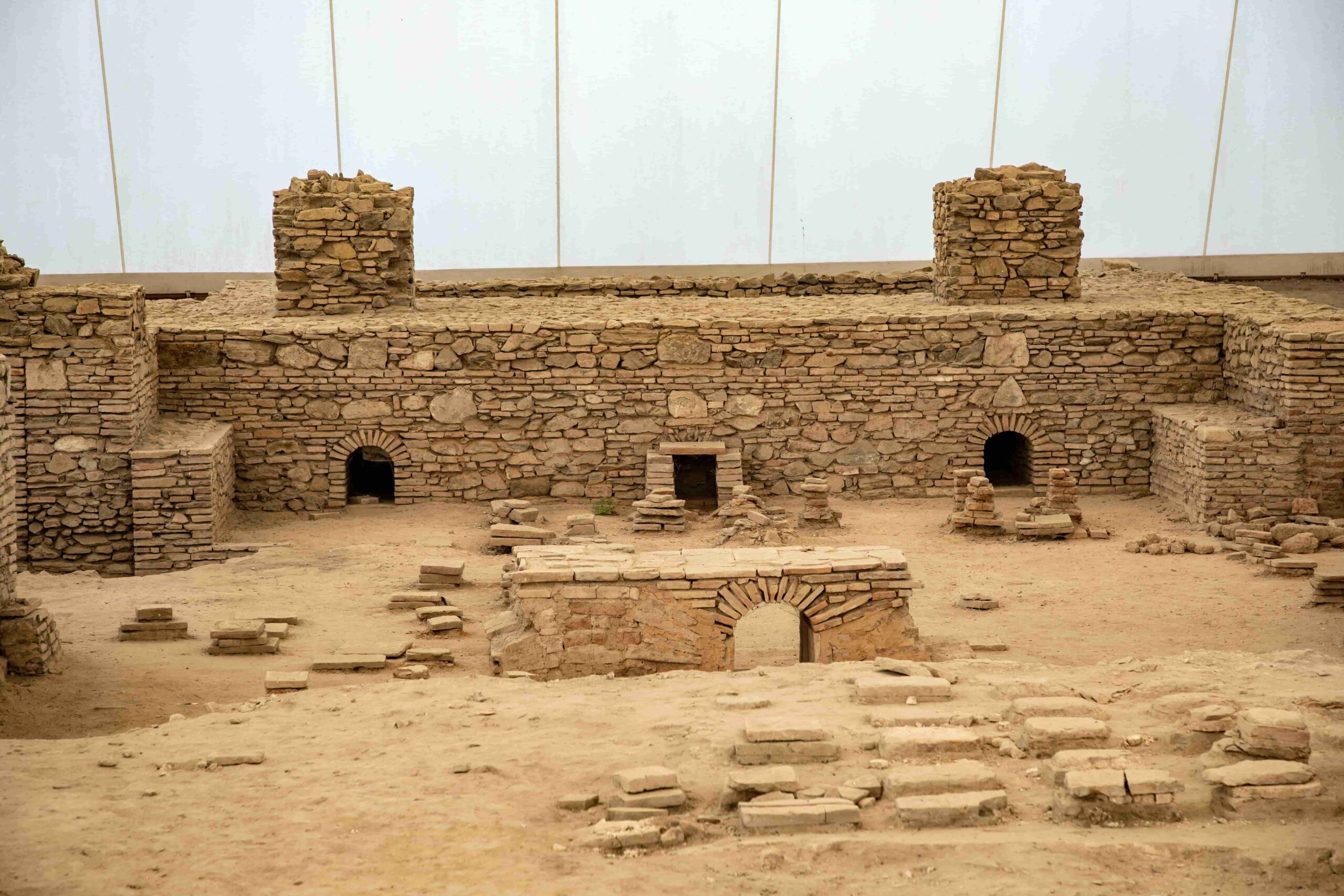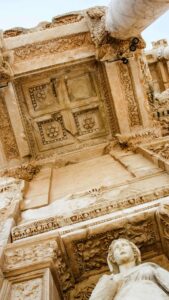Step back in time to the days of the mighty Roman Empire and embark on a journey of discovery through two of Britain’s most iconic Roman landmarks: Hadrian’s Wall and the Roman Baths in Bath. These ancient sites offer a fascinating glimpse into the lives of Roman soldiers and citizens, showcasing the architectural marvels and engineering feats of one of history’s greatest civilizations. In this article, we’ll delve into the rich history of Hadrian’s Wall and the Roman Baths, uncovering the secrets of their construction and exploring the enduring legacy of Roman culture in Britain.

Chapter 1: Hadrian’s Wall: A Frontier of Empire
Stretching across northern England for 73 miles, Hadrian’s Wall is one of the most remarkable Roman monuments in Britain. Built by Emperor Hadrian in the 2nd century AD to defend the northern frontier of the Roman Empire, the wall served as a formidable barrier against invading armies from Scotland. Today, visitors can explore sections of the wall that still stand tall amidst the rugged landscapes of Northumberland and Cumbria, marveling at its sheer scale and ingenuity. From the iconic turrets and milecastles to the ancient Roman forts and settlements that dot its length, Hadrian’s Wall offers a fascinating glimpse into the military might and strategic importance of the Roman Empire.
Chapter 2: The Roman Baths: A Sanctuary of Relaxation
In the ancient city of Bath, visitors can immerse themselves in the opulent world of Roman bathing at the Roman Baths, a UNESCO World Heritage Site that dates back over 2,000 years. Built around natural hot springs that were revered for their healing properties, the Roman Baths were a hub of social activity and relaxation for Roman citizens. Today, visitors can explore the meticulously preserved remains of the baths, including the Great Bath, the Temple of Sulis Minerva, and the ancient Roman plumbing systems that supplied the baths with hot water. From the steamy waters of the sacred spring to the lavish architecture and intricate mosaics that adorn the site, the Roman Baths offer a captivating glimpse into the daily lives and rituals of Roman Britain.
Chapter 3: Engineering Marvels and Architectural Splendor
Both Hadrian’s Wall and the Roman Baths are renowned for their architectural splendor and engineering marvels, showcasing the ingenuity and craftsmanship of the Roman Empire. Hadrian’s Wall, with its towering stone fortifications and strategic defensive features, stands as a testament to Roman military prowess and technological innovation. Meanwhile, the Roman Baths in Bath boast intricate mosaics, grand colonnades, and ornate statues that reflect the opulence and luxury of Roman society. From the precision-cut stones of Hadrian’s Wall to the elaborate carvings and decorations of the Roman Baths, these ancient landmarks offer a window into a world of architectural excellence and artistic sophistication.
Chapter 4: Cultural Legacy and Heritage Preservation
As symbols of Roman heritage and cultural identity, Hadrian’s Wall and the Roman Baths play an important role in preserving Britain’s rich history and heritage for future generations. Both sites are meticulously maintained and protected by dedicated teams of archaeologists, historians, and conservationists, who work tirelessly to ensure their continued preservation and accessibility to the public. Through educational programs, guided tours, and interactive exhibits, visitors can learn about the history and significance of these ancient landmarks, gaining a deeper appreciation for the legacy of Roman culture in Britain. By exploring Hadrian’s Wall and the Roman Baths, visitors can connect with the past and gain a greater understanding of the enduring impact of the Roman Empire on modern society.
Chapter 5: Exploring Roman Britain Today
In addition to Hadrian’s Wall and the Roman Baths, visitors to Britain can explore a wealth of other Roman remains and landmarks that dot the landscape. From the ancient city of Chester, with its well-preserved Roman walls and amphitheater, to the Roman fortresses of Vindolanda and Segedunum along Hadrian’s Wall, there are countless opportunities to delve into the history and heritage of Roman Britain. Whether you’re wandering through the ruins of a Roman villa, exploring a Roman museum, or simply admiring the legacy of Roman architecture in modern cities, the remnants of Roman Britain offer a captivating journey through time and a deeper appreciation for the enduring influence of Roman culture in Britain today.
Conclusion:

Hadrian’s Wall and the Roman Baths stand as enduring symbols of Roman civilization and its legacy in Britain. From the rugged frontier of Hadrian’s Wall to the luxurious sanctuary of the Roman Baths, these ancient landmarks offer a fascinating glimpse into the lives of Roman soldiers and citizens, showcasing the architectural marvels and engineering feats of one of history’s greatest civilizations. As visitors explore these remarkable sites, they are invited to step back in time and immerse themselves in the rich history and cultural heritage of Roman Britain. Whether you’re tracing the footsteps of Roman soldiers along Hadrian’s Wall or relaxing in the steamy waters of the Roman Baths, a journey through Roman Britain is sure to be an unforgettable adventure that leaves a lasting impression on all who visit.




